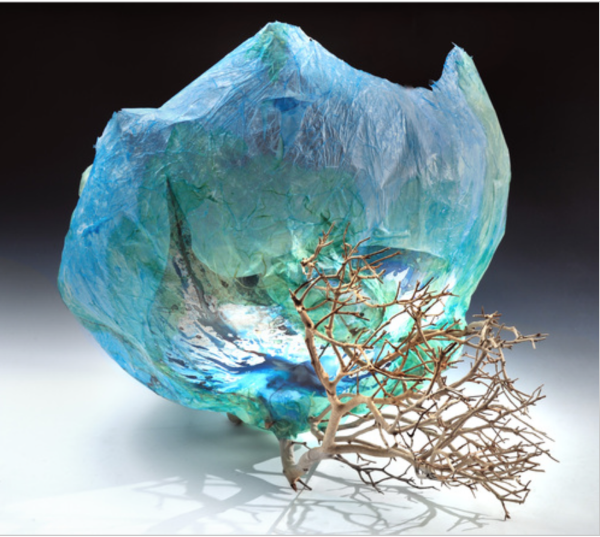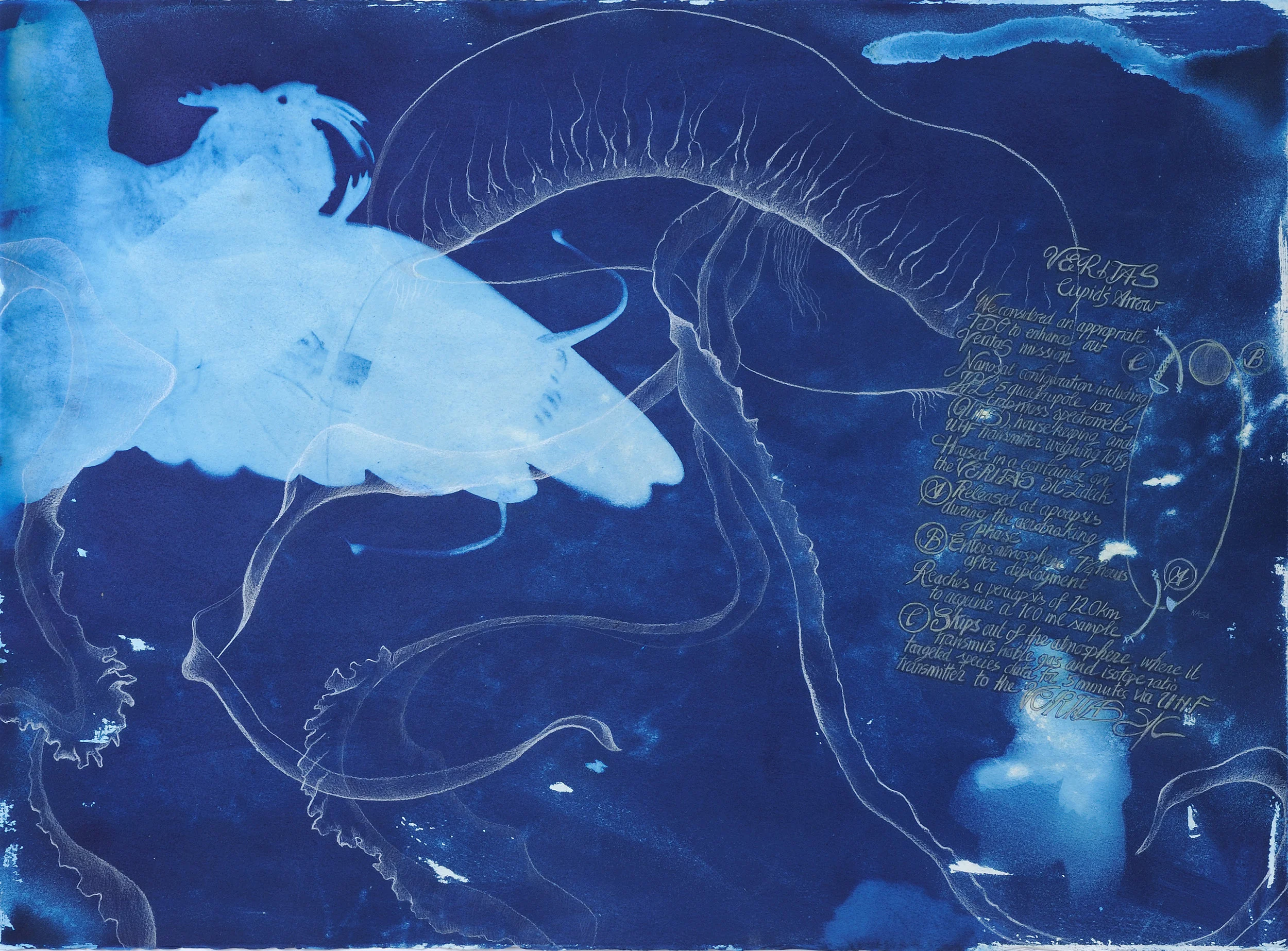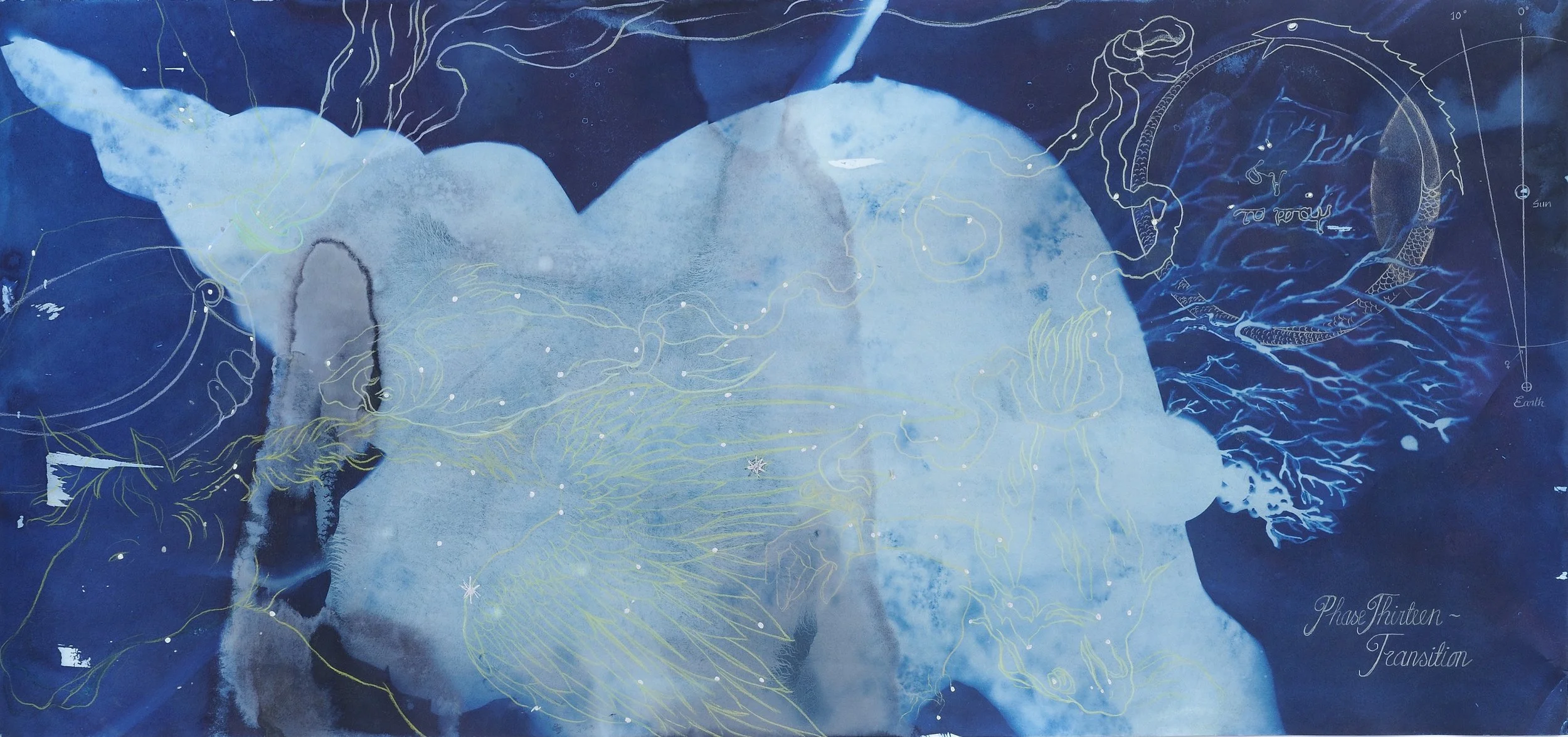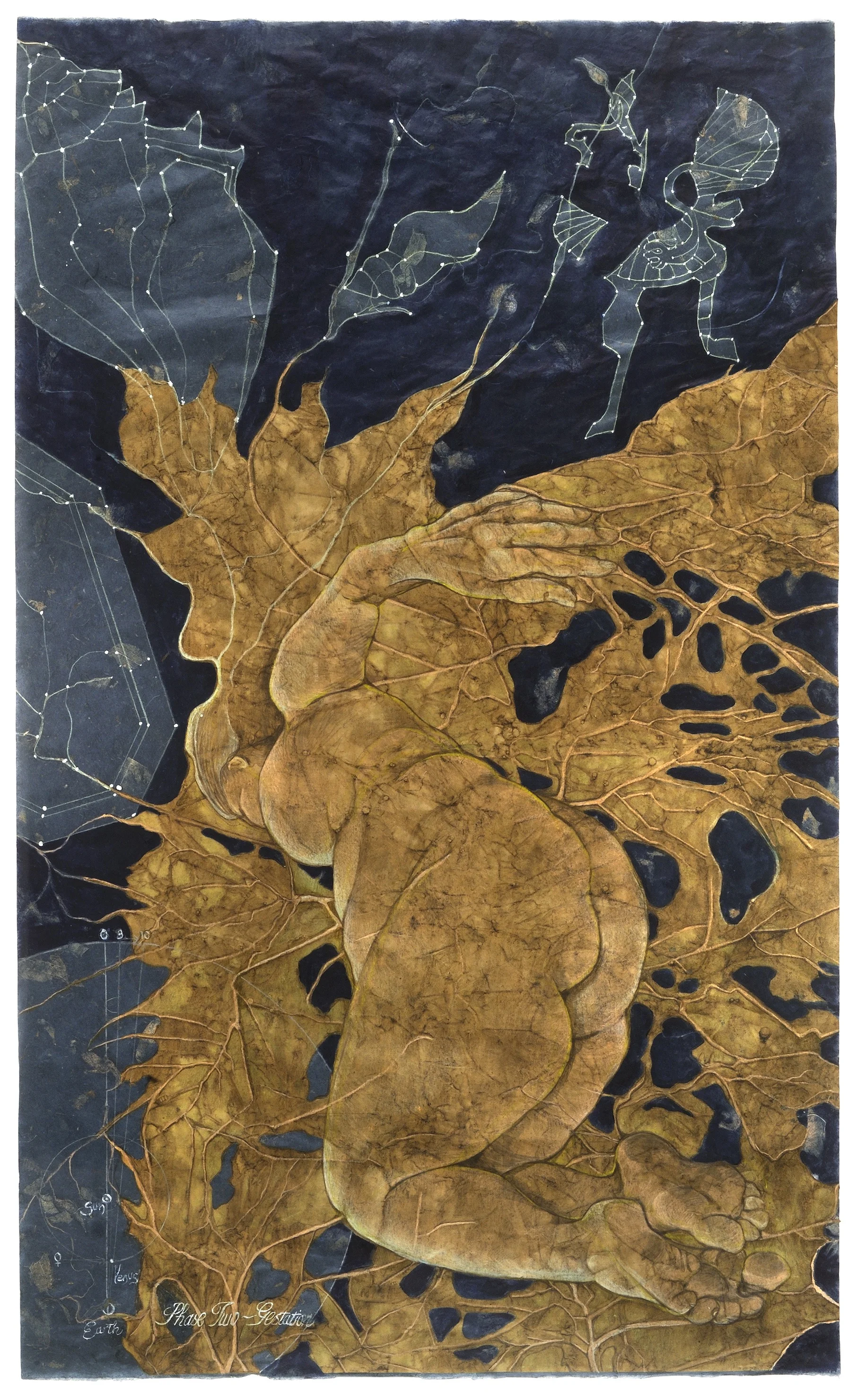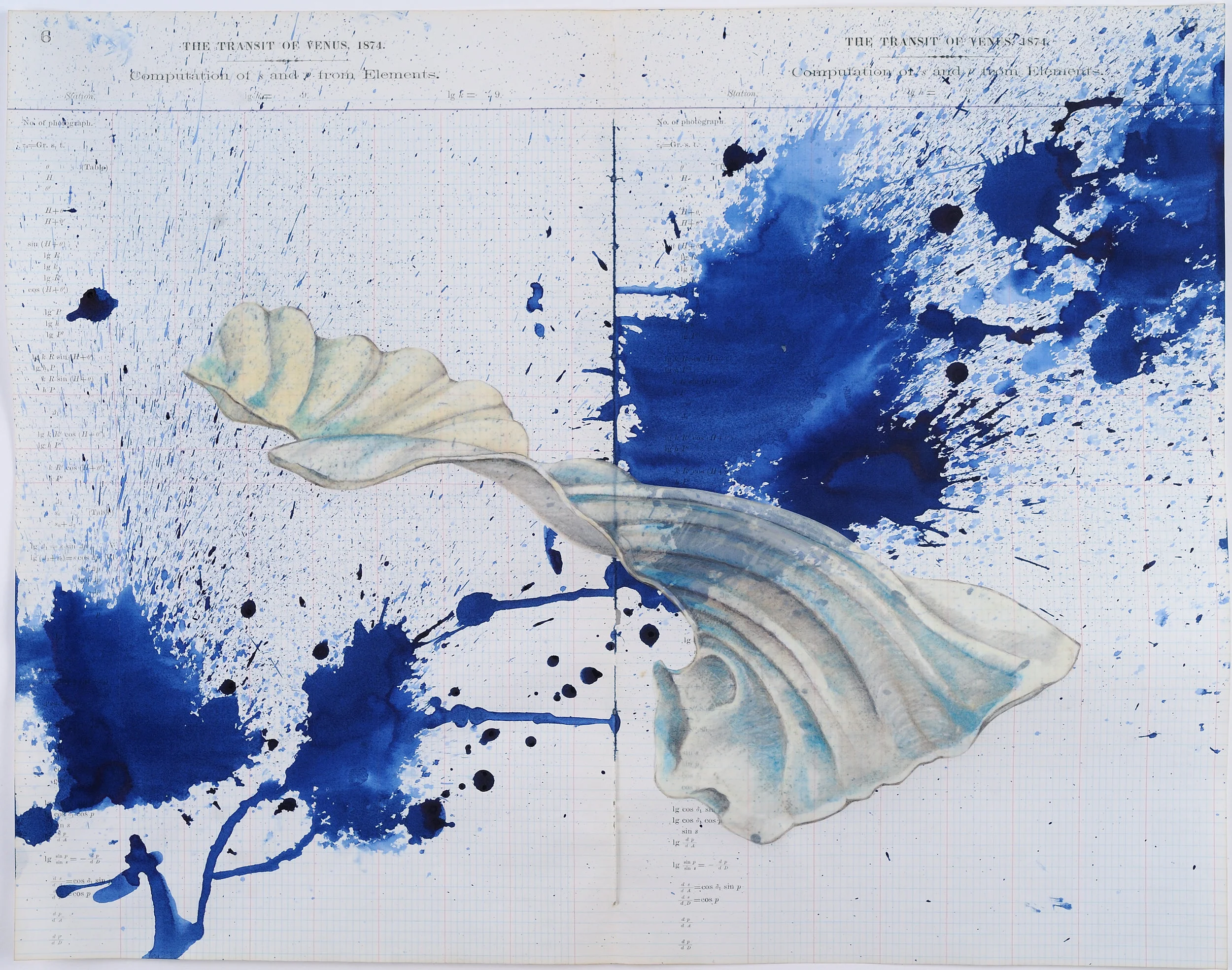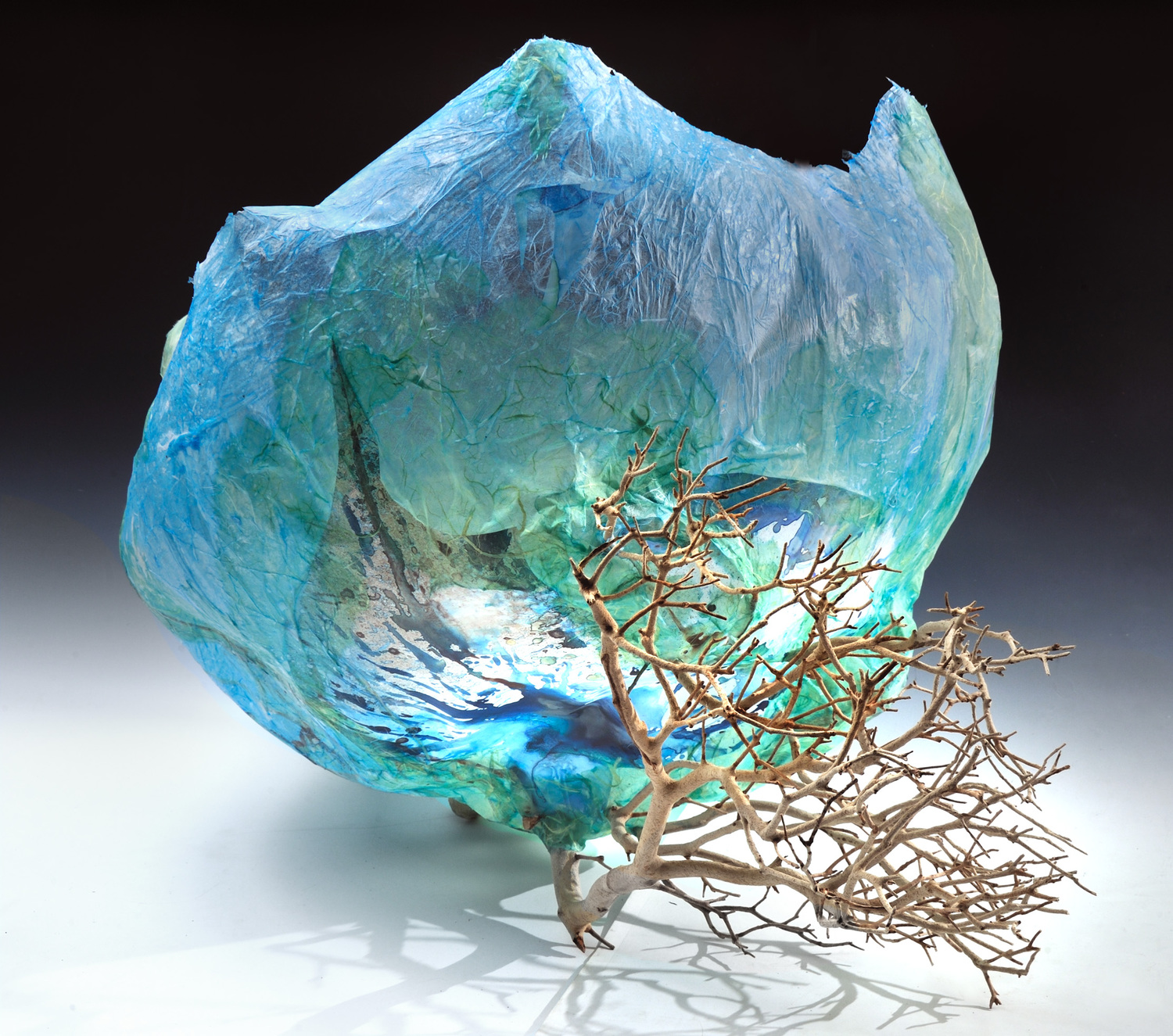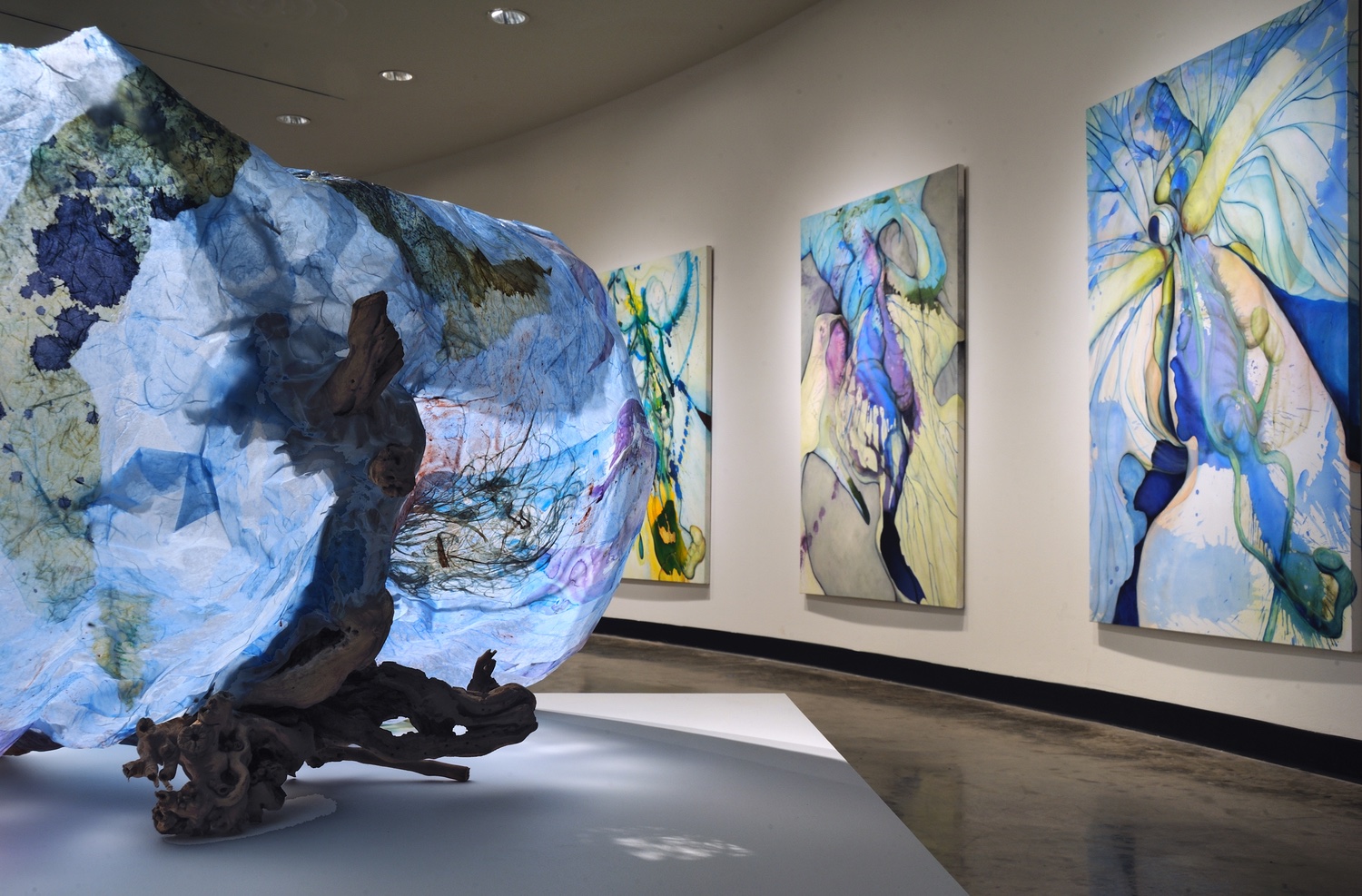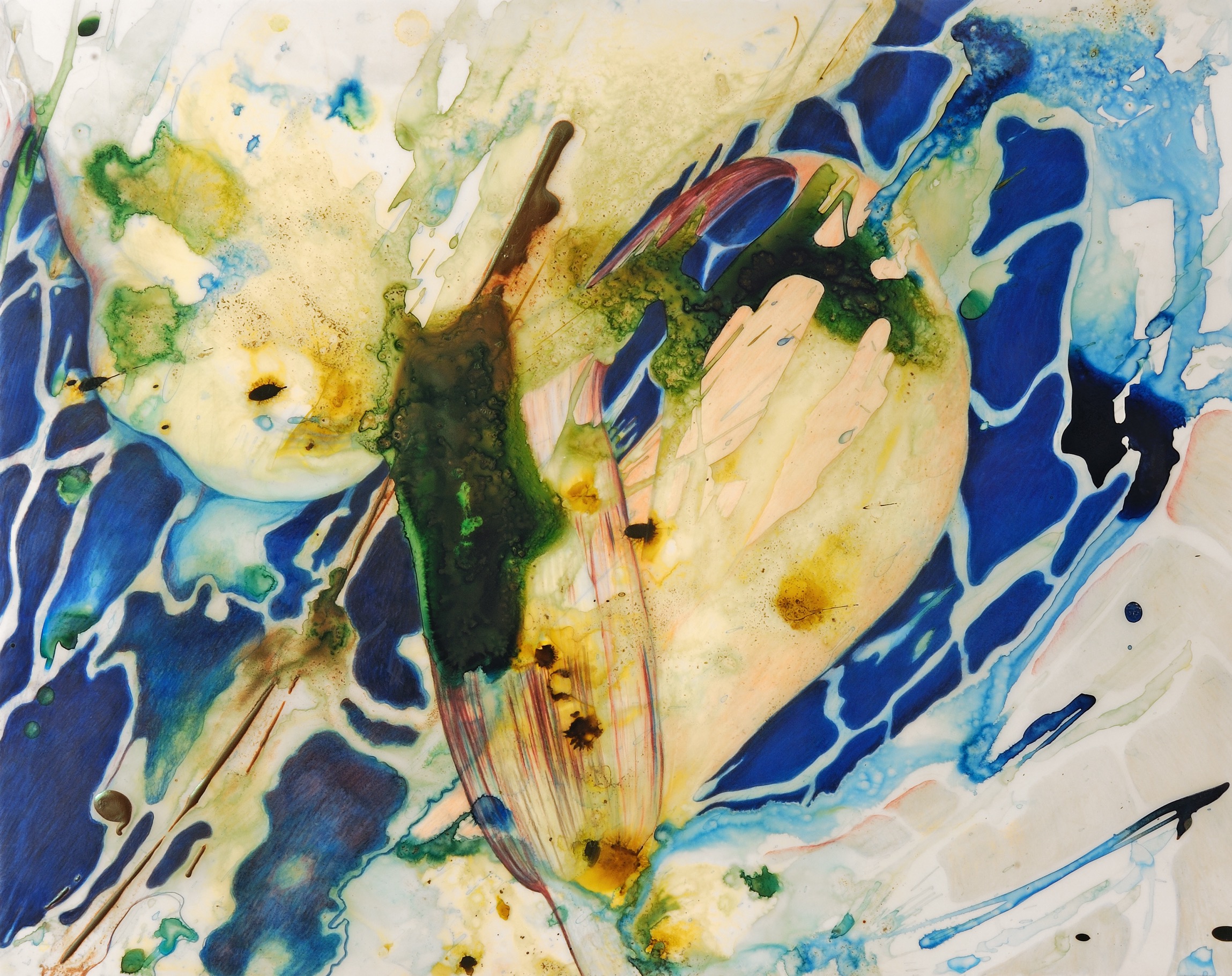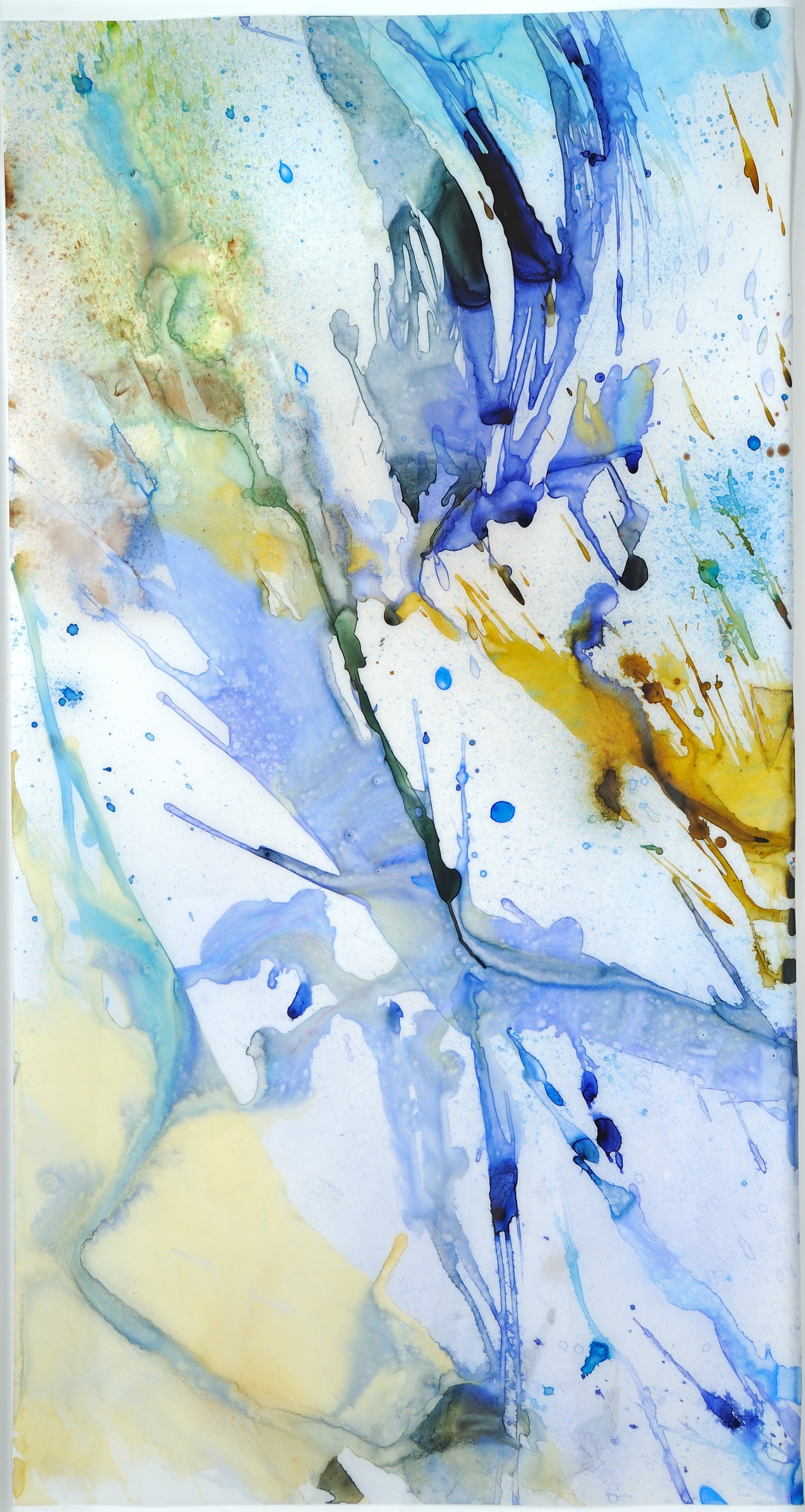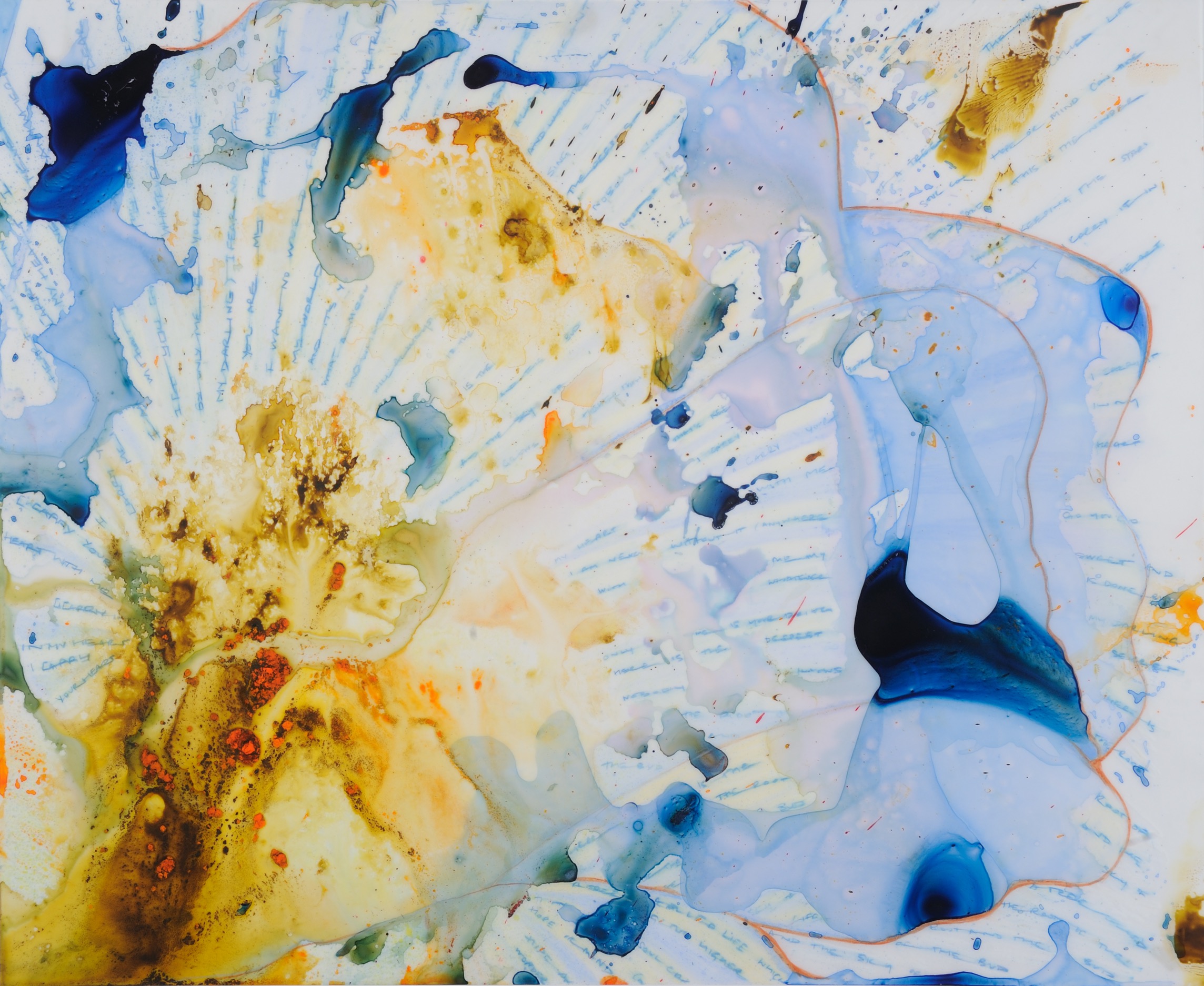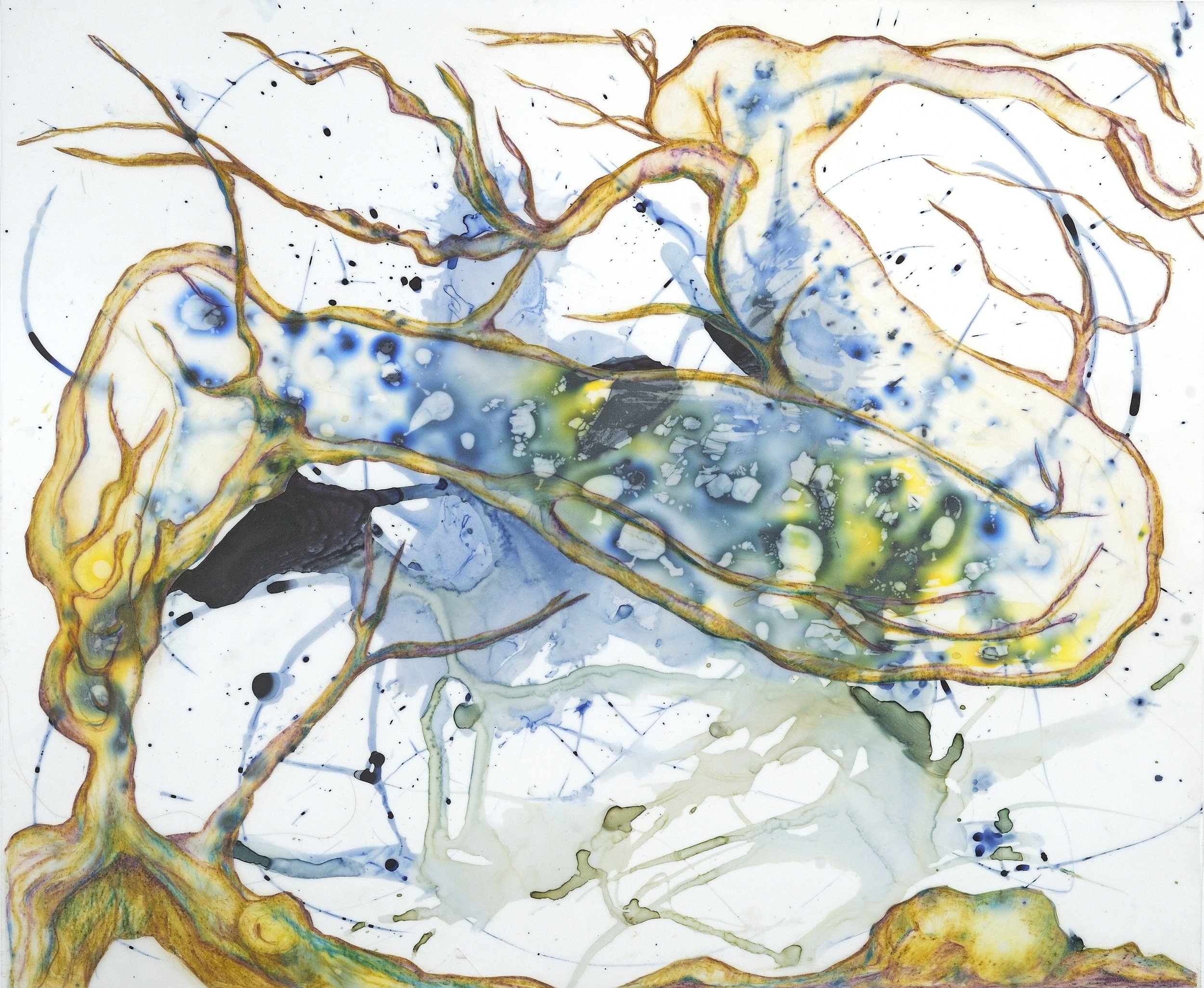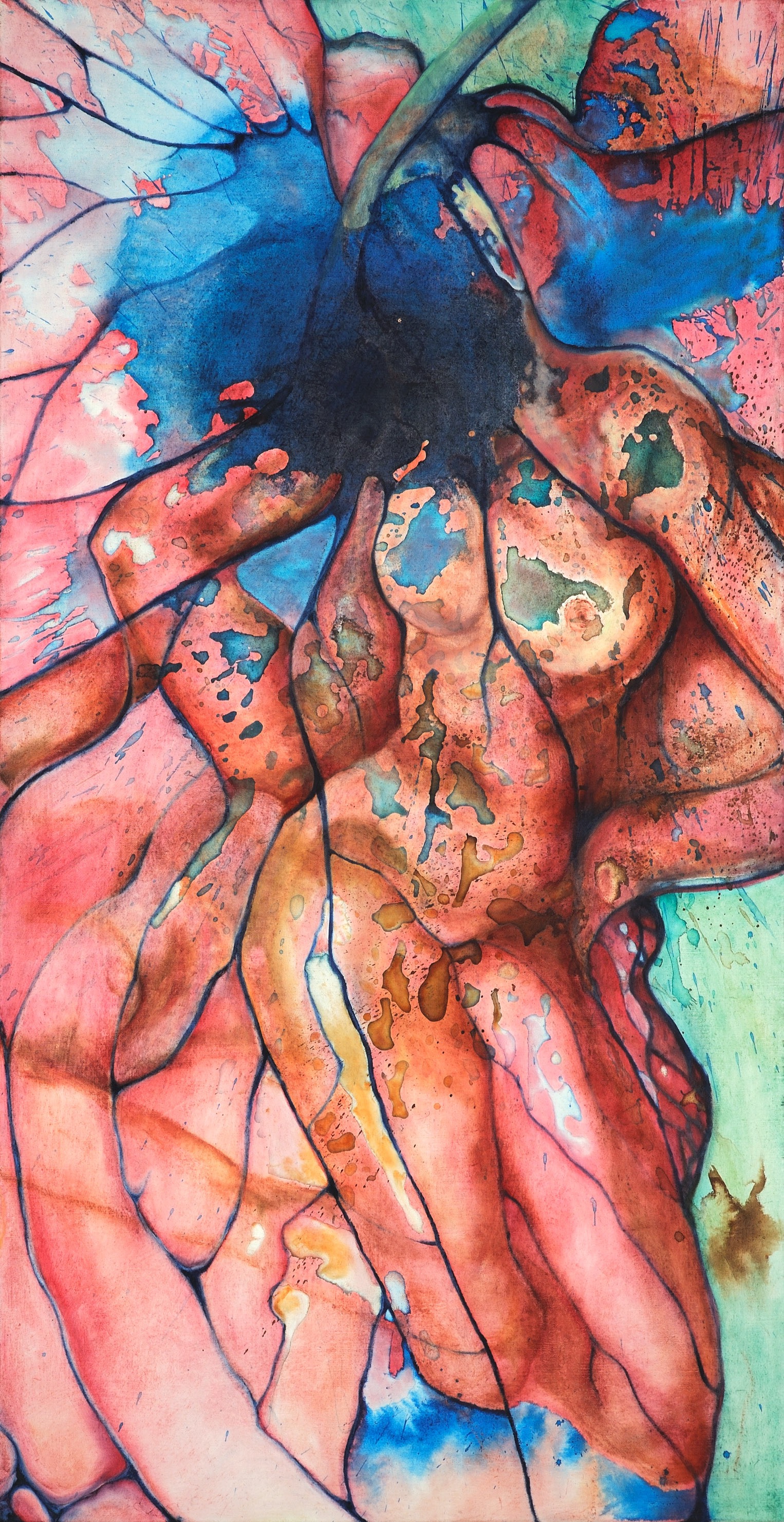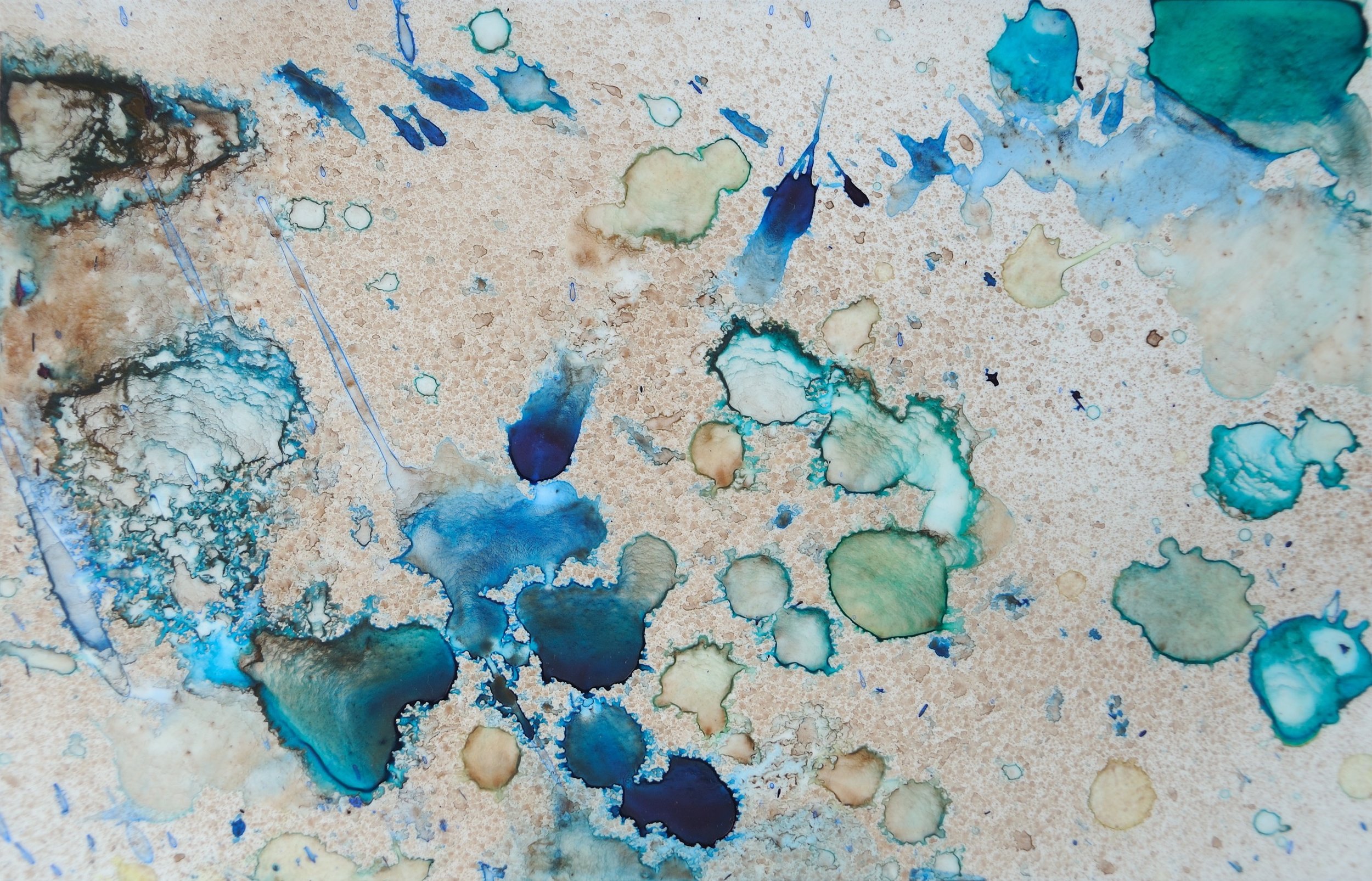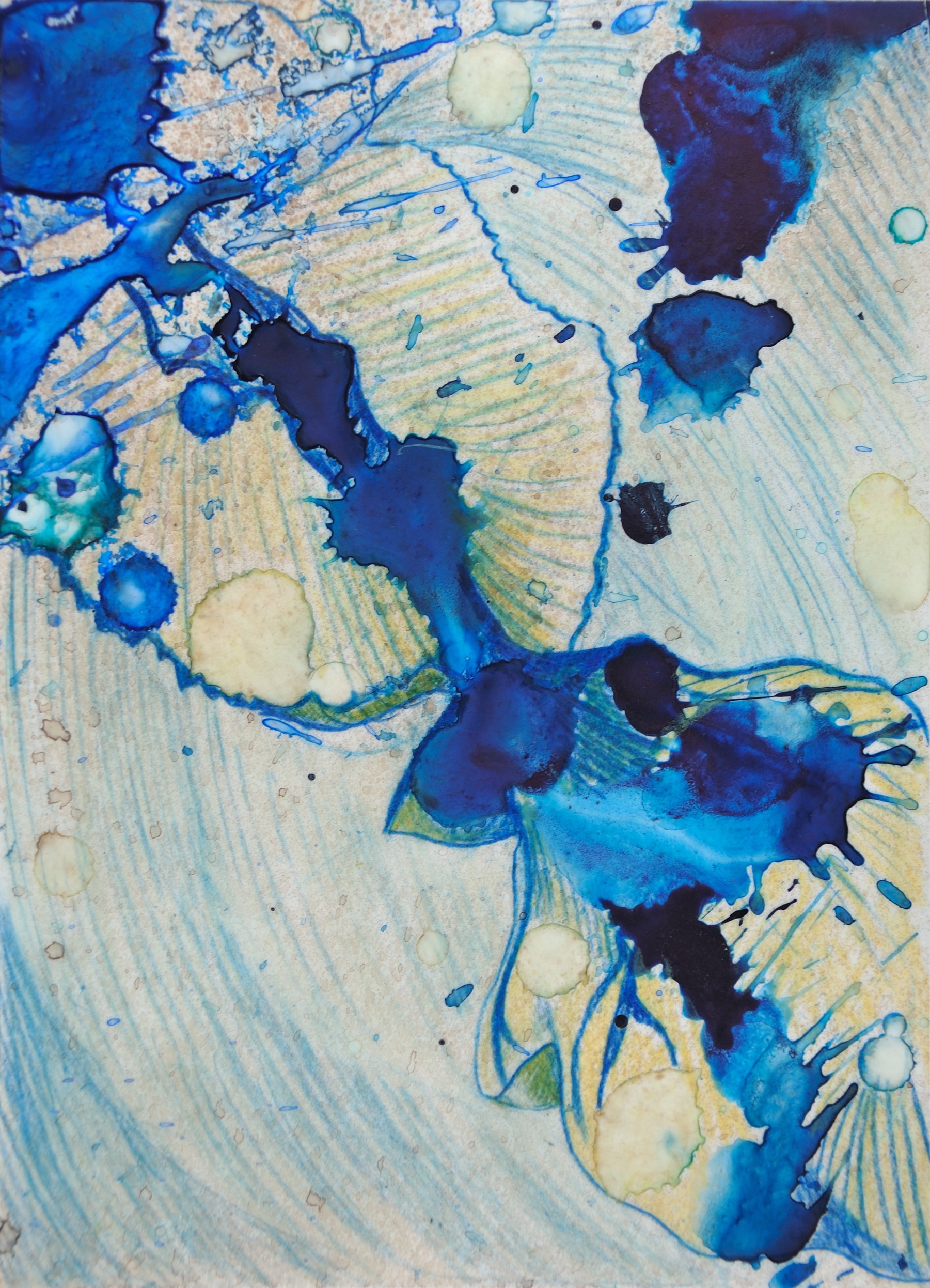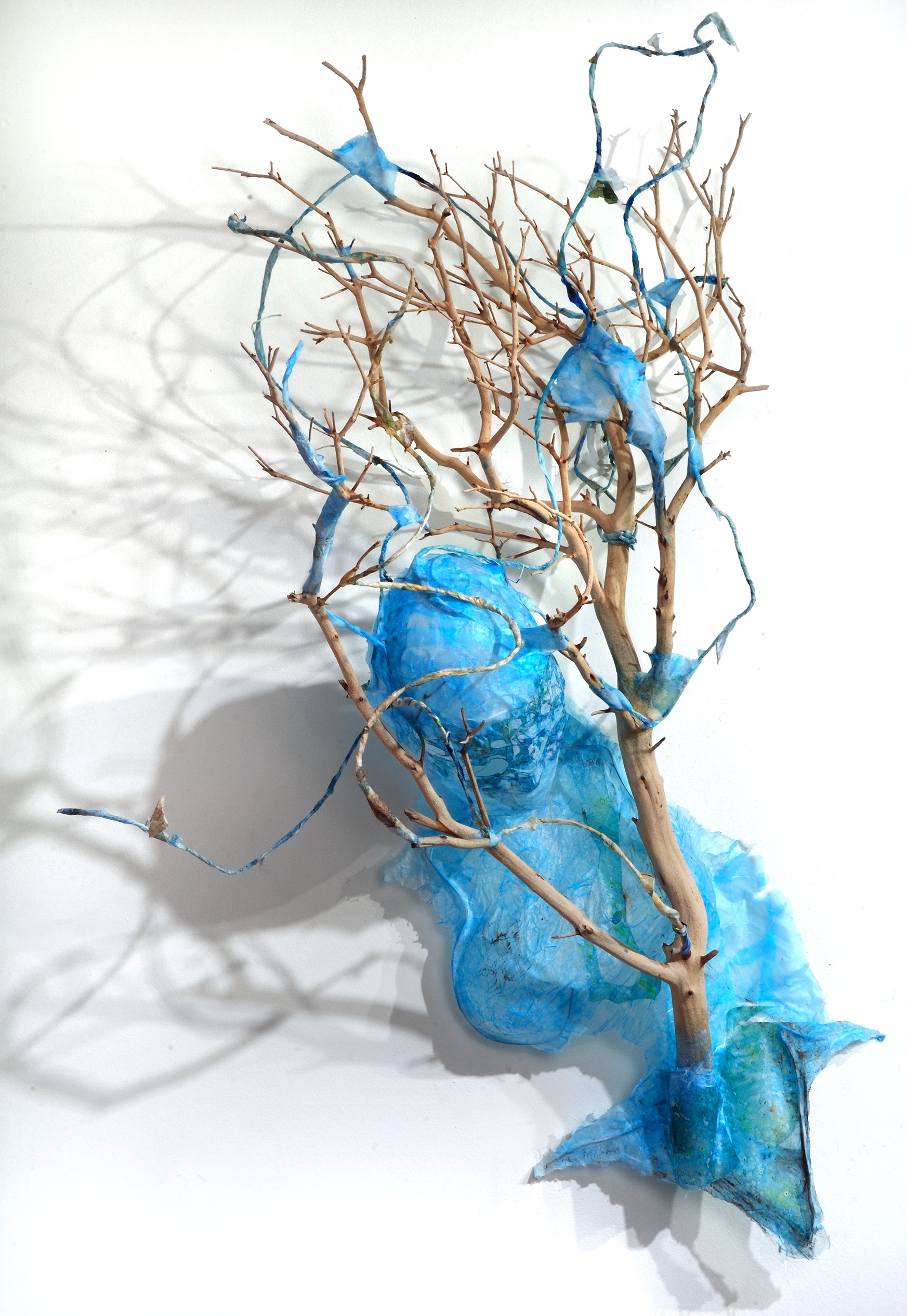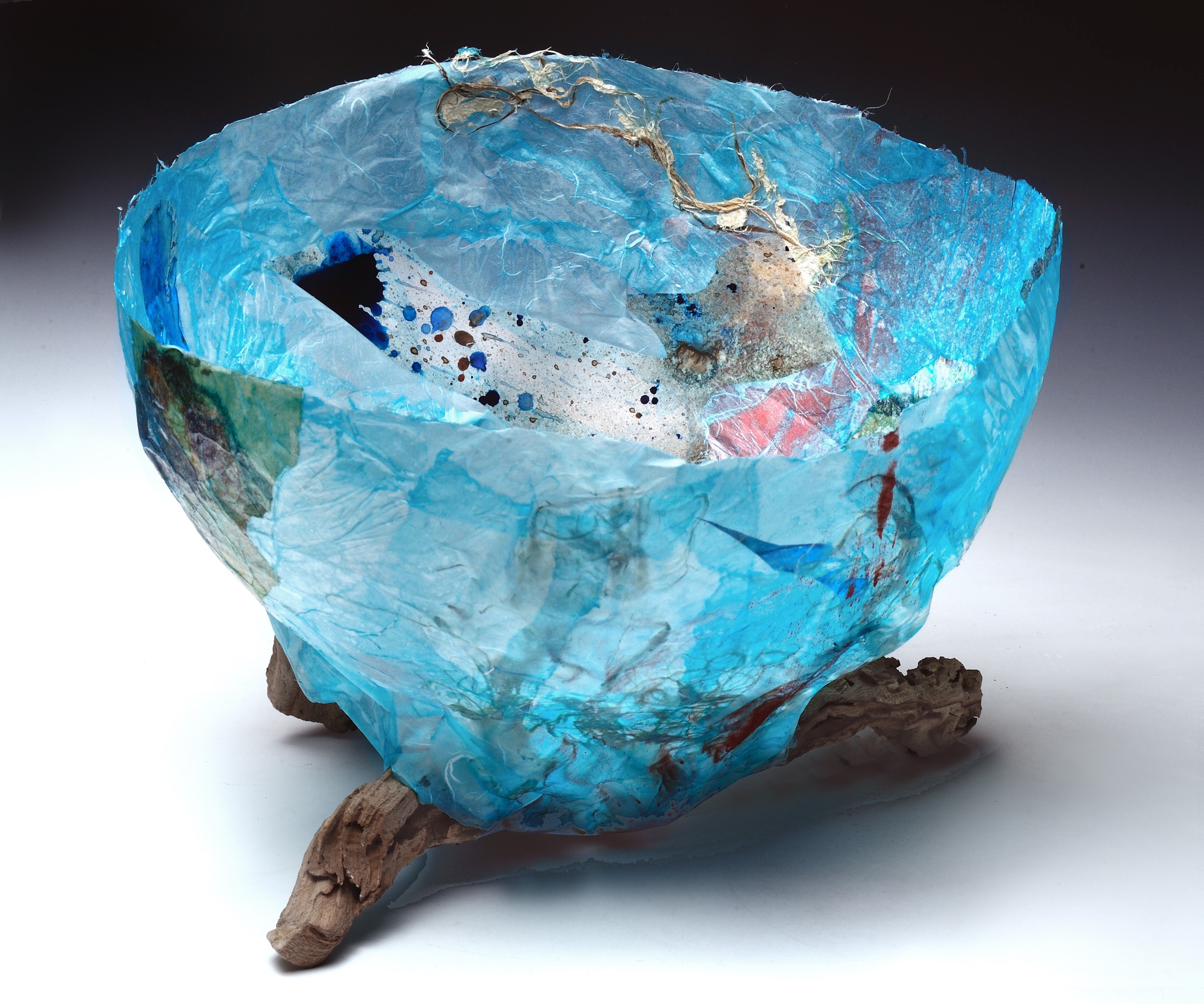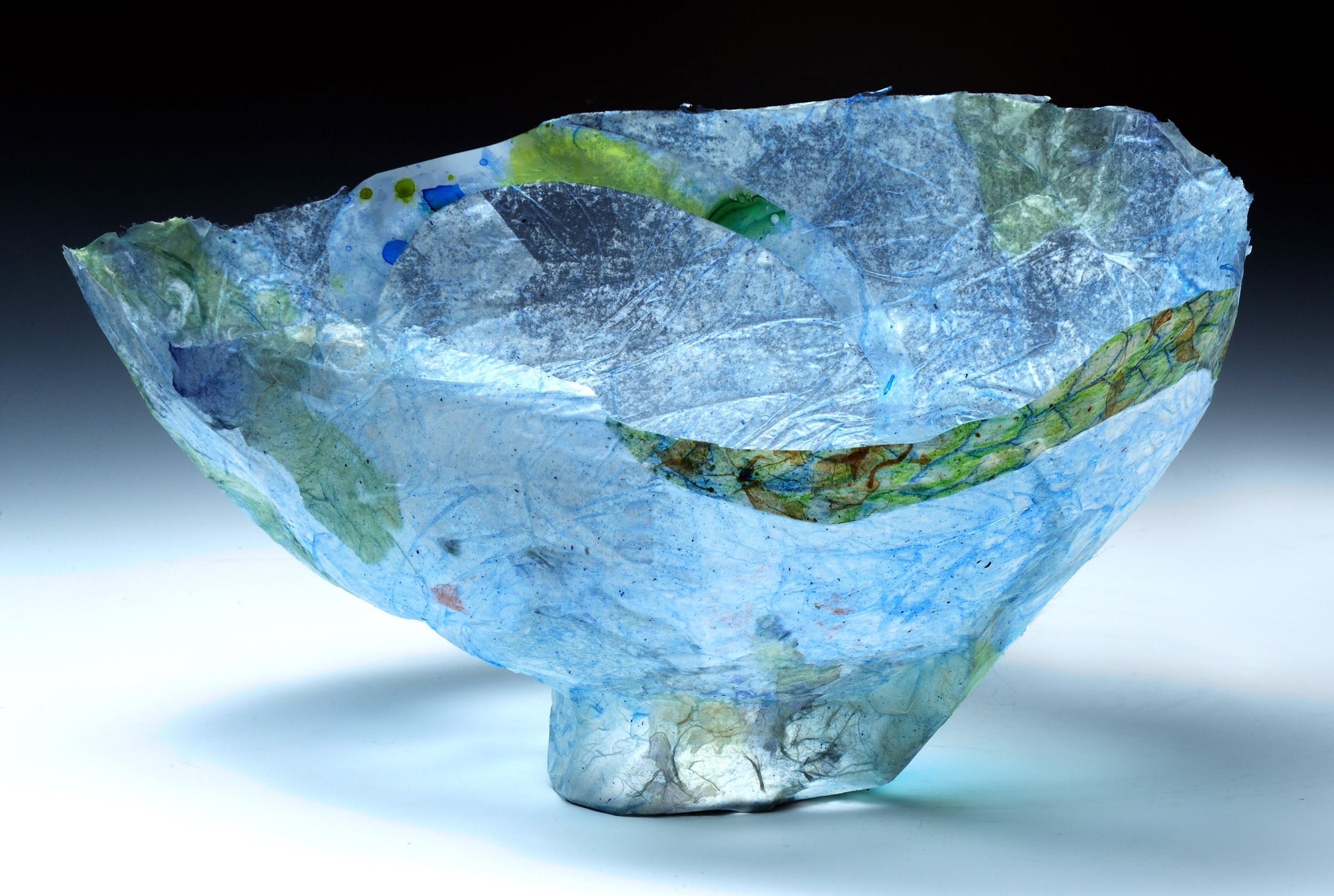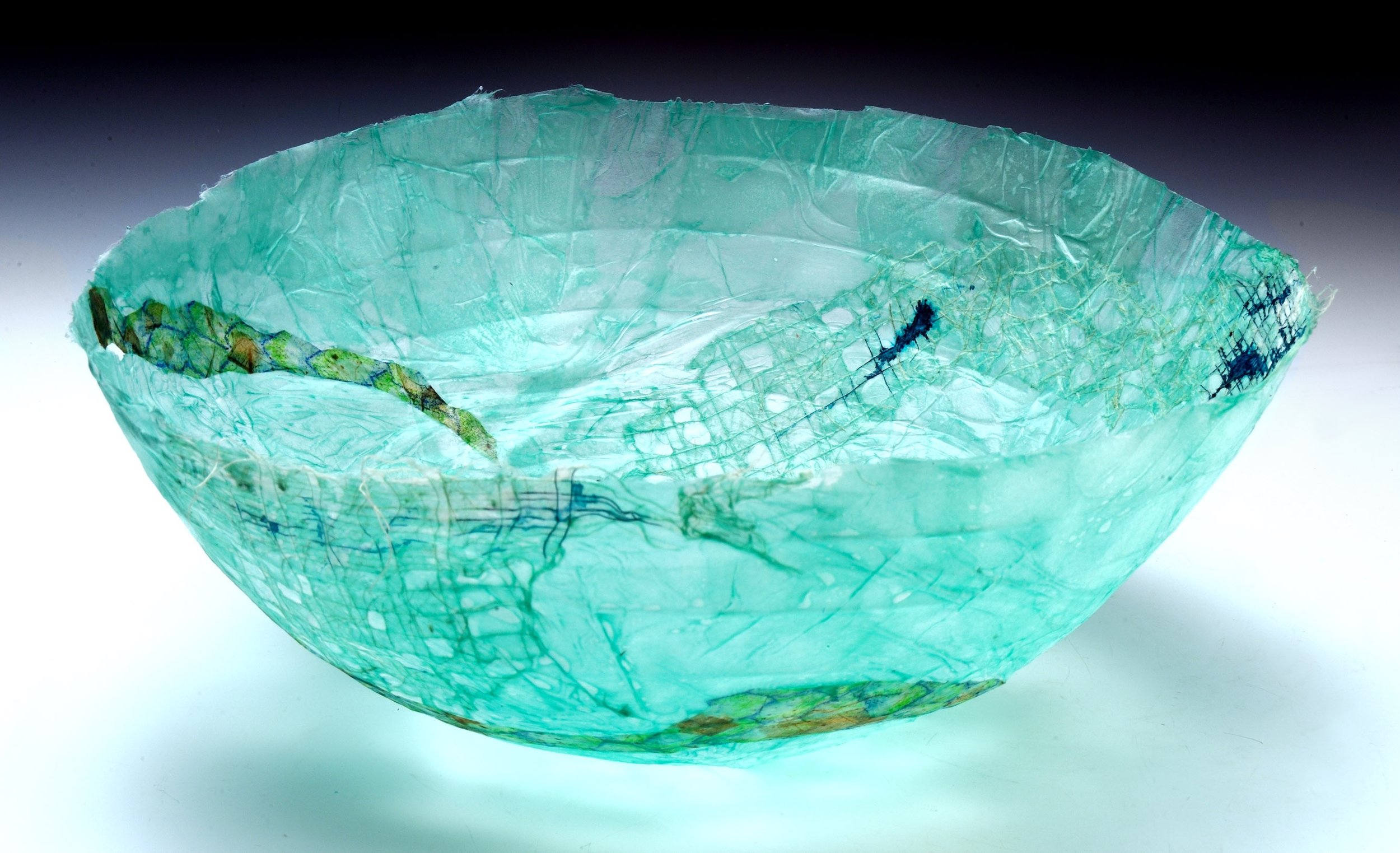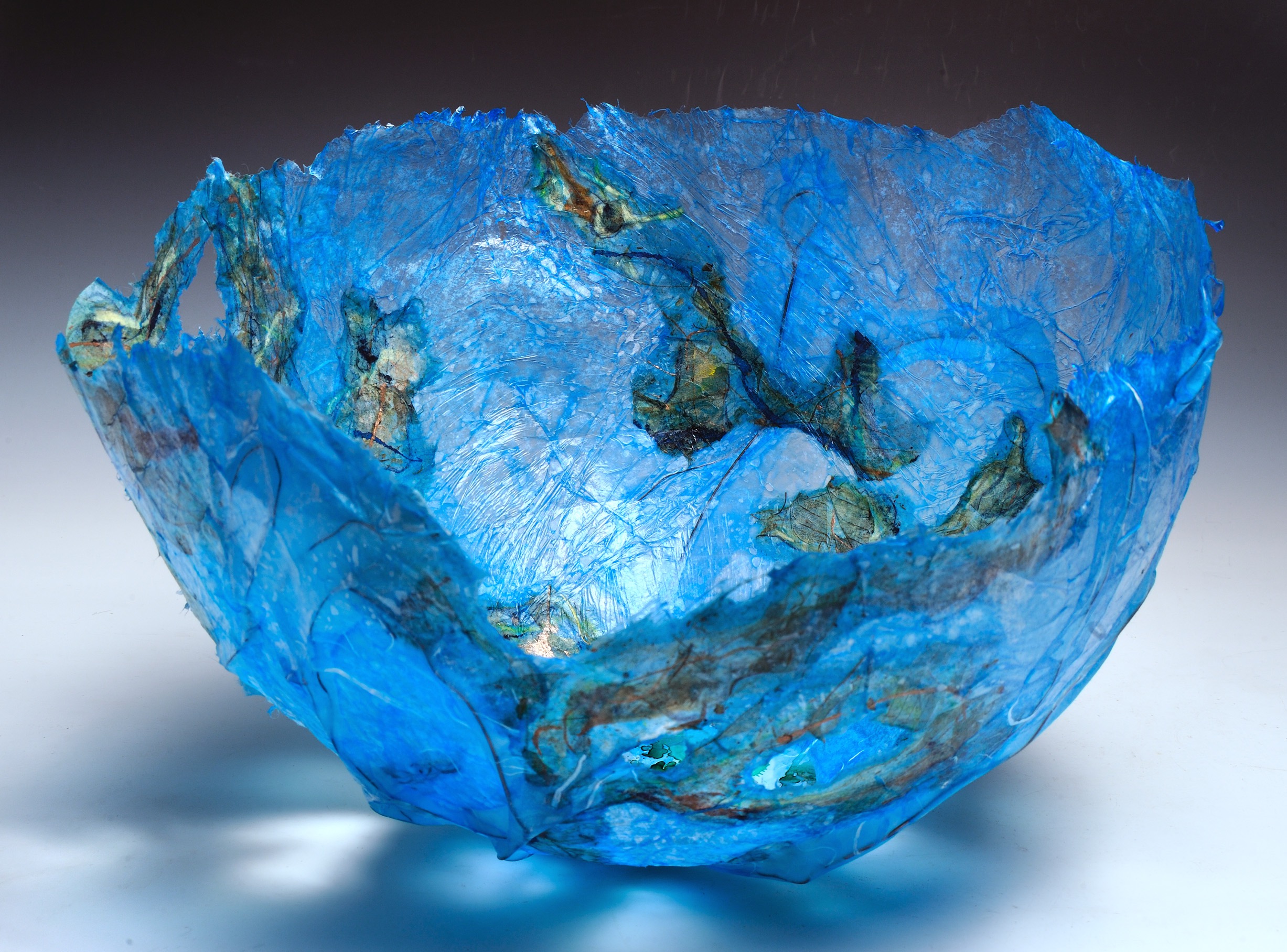MICHELINE KLAGSBRUN
Cupid’s Arrow
Mixed media with cyanotype on paper
22” x 30”
TRANSIT OF VENUS: phase 13 TRANSITION
Mixed media with cyanotype on paper
18” x 36”
TRANSIT OF VENUS: phase 2 GESTATION
Ink + color pencil on paper
41” x 26.25”
COMPUTATION from ELEMENTS: SHELL
Color pencil + ink on ledger paper
16” x 20.5”
TRANSIT OF VENUS: phase 8 TRANSMUTATION
Mixed media with cyanotype on paper
42” x 23”
Artist Statement
TRANSIT OF VENUS
This new body of work originated in a found object: a ledger containing observations of the 1874 Transit of Venus, a phenomenon occurring every 243 years when the planet Venus moves twice across the face of the sun. Astronomers over the centuries have tracked her movements , dating back 5000 years ago to the Sumerians, and seen her as divine.
I take the Transit of Venus as an entry point into contemplation of a variety of inter-related phenomena, celestial and astronomical, scientific and mythological.
Ever since antiquity, astronomers have studied the 13 phases of Venus, from her rise as the morning star, to her descent into darkness and invisibility, and her re-emergence in the evening sky. These phases occur over a 19-month cycle, marking both a physical and a spiritual passage. Each phase is expressed here in a different work.
In keeping with the origin of this series, many pieces begin with a 19th century photographic printing technique, cyanotype, which I use to evoke the depths of cosmos and ocean. In two important ways I go beyond the traditional use of this medium, both by “printing” my own drawings rather than solid objects, and then by further layering the captured images with more drawing in ink and pencil.
In some ways this work is a departure for me in terms of subject matter and palette. Nonetheless, closer scrutiny reveals many aspects of similarity, from references to classical mythology to techniques which evoke my fascination with metamorphosis as a state in which multiple forms co-exist. Translucent materials- inks, vellum paper, thin papier-maché, the cyanotype process– allow me to play with light and to accumulate visual layers, so that different forms can overlap within the same space.
With this new body of work, I continue my ongoing exploration of the tension between form and formlessness, order and chaos: the systems of order and measurement that have been applied to the cosmos are balanced against the chaos that moves below the surface of the deep.
MICHELINE KLAGSBRUN, APRIL 2019
BLOSSOMS OF LOSS AND DESIRE
In this series of works, I explore the processes of growth, bloom and decay in nature. My point of departure is Darwin’s treatise on the sex life and reproductive organs of orchid. Nature is beautiful but also dark in its power. Blooming is an unstable process that can sometimes result in collapse. Tree branches push forward, penetrate and invade.
For Ovid (Metamorphoses, AD 8), a number of plants were actually transformations of human beings: the grief-stricken lover, the wounded athlete, the doomed narcissist. Their outward beauty is an expression of desire and loss. That idea is the focus of this exhibition - BLOSSOMS OF LOSS AND DESIRE.
I am fascinated by states in which multiple forms co-exist. I use different techniques to evoke these states of neither/both. Translucent materials- inks, vellum paper, thin papier-maché – enable the accumulation of visual layers, so that different forms can overlap within the same space. The sculptural pieces feel like an outgrowth of my paintings and drawings into a new form. I mold fragments of drawings together using a mixture of thin tissue, medium, ink and pigment, while incorporating leaves, branches, tree roots, or shells. These were also the collections of my childhood, natural objects invested with supernatural significance.
As I construct these sculptures, I feel as if I were crafting a skin, a permeable container or membrane. I embed veins of wire and branches beneath the surface, to evoke both the veins of a leaf and those of a hand. The inclusions also have anatomical associations: white twigs evoke a skeleton, the curve of a palm branch suggests the muscle of a thigh. The results are chimera-like, a combination of different strands of DNA.
MICHELINE KLAGSBRUN, MARCH 2016

